
Enchanting Champasak: A Hidden Gem in Southern Laos
Discover Champasak: A serene town in Southern Laos, where ancient temples, lush landscapes, and authentic Laotian culture await every traveler.
Nestled along the Mekong River, Champasak is a serene haven that offers a glimpse into the rich cultural tapestry of Laos. This charming town is most renowned for the ancient temple complex, Wat Phou, a UNESCO World Heritage site that dates back to the Khmer Empire. The mystical ruins, surrounded by lush greenery and misty mountains, provide a captivating backdrop for history enthusiasts and adventurers alike. Beyond the temple, Champasak's laid-back atmosphere invites visitors to unwind and immerse themselves in the simple pleasures of rural life. Traditional wooden houses line the streets, and local markets offer a taste of authentic Laotian cuisine. Don't miss the opportunity to sample fresh fish from the Mekong, or the aromatic Laotian coffee grown in the nearby Bolaven Plateau. For those seeking natural beauty, Champasak does not disappoint. The region is home to stunning waterfalls, such as Tad Fane and Tad Yuang, perfect for a refreshing dip or a scenic hike. Additionally, the nearby Si Phan Don, or Four Thousand Islands, is a must-visit destination where you can relax on river islands, spot the rare Irrawaddy dolphins, and enjoy the tranquil riverine scenery.
Local tips in Champasak
- Visit Wat Phou early in the morning to avoid the heat and crowds.
- Rent a bicycle to explore the town and its surroundings at your own pace.
- Try the local specialty, Laotian coffee, at one of the town's cozy cafes.
- Plan a day trip to the Bolaven Plateau for breathtaking waterfalls and coffee plantations.
- Carry some cash as ATMs can be scarce and credit card acceptance is limited.
Enchanting Champasak: A Hidden Gem in Southern Laos
Nestled along the Mekong River, Champasak is a serene haven that offers a glimpse into the rich cultural tapestry of Laos. This charming town is most renowned for the ancient temple complex, Wat Phou, a UNESCO World Heritage site that dates back to the Khmer Empire. The mystical ruins, surrounded by lush greenery and misty mountains, provide a captivating backdrop for history enthusiasts and adventurers alike. Beyond the temple, Champasak's laid-back atmosphere invites visitors to unwind and immerse themselves in the simple pleasures of rural life. Traditional wooden houses line the streets, and local markets offer a taste of authentic Laotian cuisine. Don't miss the opportunity to sample fresh fish from the Mekong, or the aromatic Laotian coffee grown in the nearby Bolaven Plateau. For those seeking natural beauty, Champasak does not disappoint. The region is home to stunning waterfalls, such as Tad Fane and Tad Yuang, perfect for a refreshing dip or a scenic hike. Additionally, the nearby Si Phan Don, or Four Thousand Islands, is a must-visit destination where you can relax on river islands, spot the rare Irrawaddy dolphins, and enjoy the tranquil riverine scenery.
When is the best time to go to Champasak?
Iconic landmarks you can’t miss
Patuxay - Victory Monument
Discover the beauty and history of Patuxay, Vientiane's iconic Victory Monument, where culture meets stunning city views.
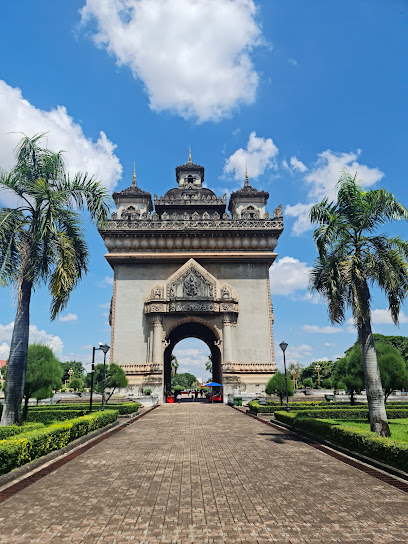
Tad Gneuang Waterfall
Experience the breathtaking beauty of Tad Gneuang Waterfall, a stunning natural attraction nestled in Laos' lush landscapes, perfect for nature lovers and adventurers.
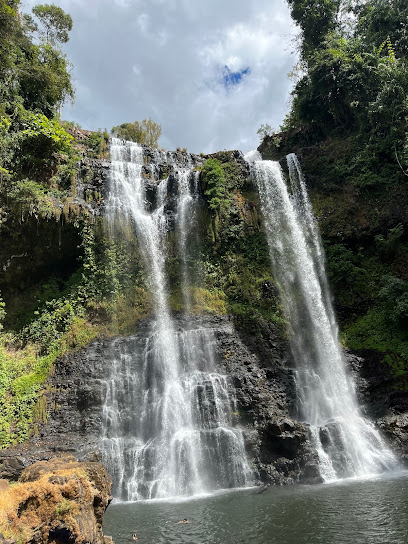
Vat Phou
Explore the stunning Vat Phou, a UNESCO World Heritage Site in Laos, renowned for its ancient Khmer architecture and breathtaking landscapes.
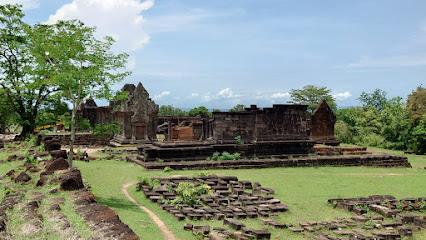
Champasak Grand Hotel
Discover the elegance and serenity of the Champasak Grand Hotel, a luxurious escape by the Mekong River in beautiful Pakse, Laos.

Wat Phousalao
Explore the stunning Wat Phousalao in Pakse, a tranquil Buddhist temple offering breathtaking views of the Mekong River and a glimpse into Laotian spirituality.
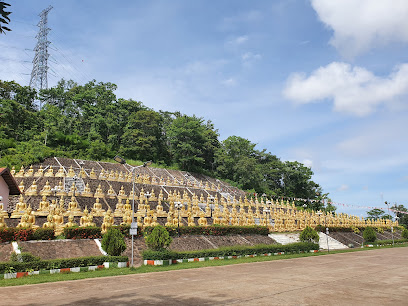
Li Phi Somphamit Waterfalls
Experience the breathtaking beauty of Li Phi Somphamit Waterfalls in Laos, a stunning natural attraction perfect for adventure and relaxation.
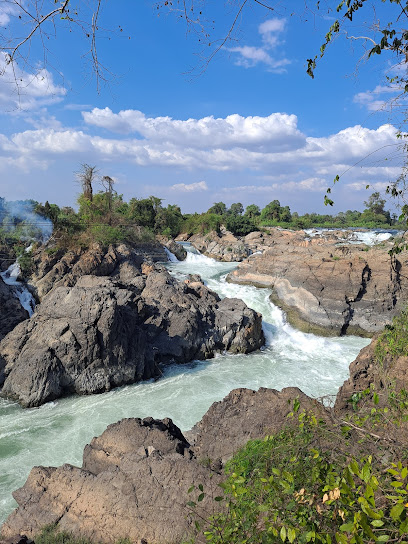
Tad Fane Waterfall
Experience the breathtaking beauty of Tad Fane Waterfall in Laos, where nature's grandeur meets serene tranquility in a stunning national park.
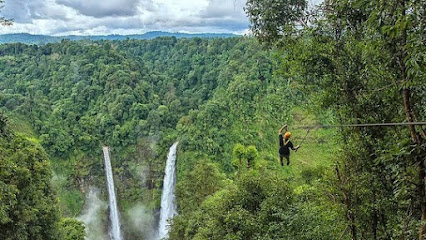
Wat Luang
Discover the serenity and cultural richness of Wat Luang, a stunning Buddhist temple in Pakse, Laos, that captures the essence of spiritual tranquility.

The River Resort
Experience the ultimate relaxation and adventure at The River Resort, nestled along the serene Mekong River in Champasak, Laos.

Champasak Palace Hotel
Discover tranquility and comfort at Champasak Palace Hotel, a wellness retreat in the heart of Pakse, Laos, perfect for relaxation and exploration.

La Folie Lodge
Experience luxury and tranquility at La Folie Lodge, the premier resort hotel in Laos, surrounded by nature and rich culture.
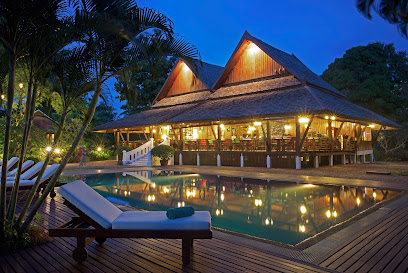
Ongkeo Monument Park
Explore the serene Ongkeo Monument Park in Salavan, where nature meets heritage in a picturesque memorial setting perfect for reflection.
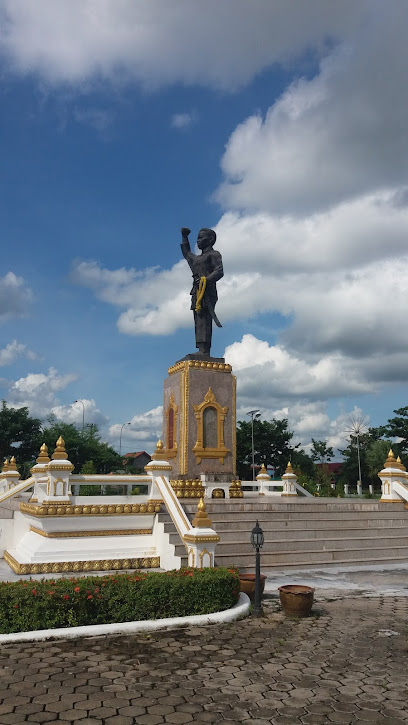
Tad Tayicsua Homestay
Immerse yourself in Laotian culture at Tad Tayicsua Homestay, a serene retreat in Ban Latassasine with authentic experiences and warm hospitality.
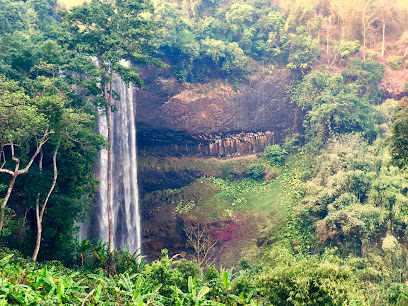
Tad Champee Waterfall
Immerse yourself in the natural beauty of Tad Champee Waterfall, a stunning destination in Paksong ideal for swimming and relaxation amidst lush landscapes.
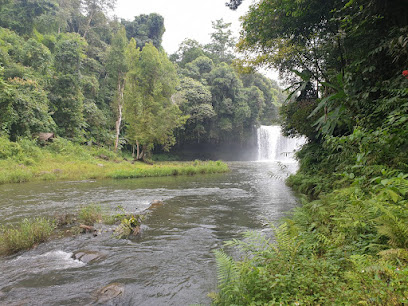
Old French Port Don Det
Explore Old French Port Don Det, a historical landmark where colonial charm meets the scenic beauty of the Mekong River, perfect for relaxation and exploration.
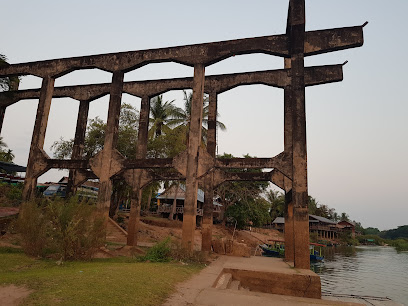
Unmissable attractions to see
Tad Gneuang Waterfall
Explore the breathtaking beauty of Tad Gneuang Waterfall in Paksong District, Laos—an unforgettable natural wonder amidst lush landscapes.
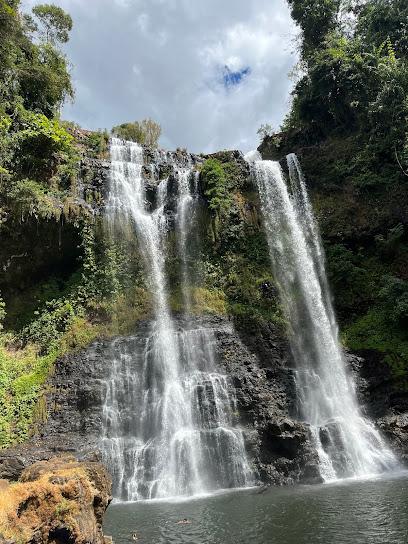
Vat Phou
Explore the mystical ruins of Vat Phou, a UNESCO World Heritage site in Laos, rich in history and spiritual significance amidst breathtaking scenery.
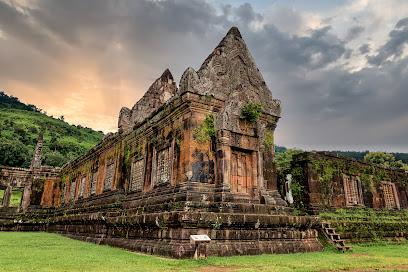
Wat Phousalao
Discover the tranquil beauty of Wat Phousalao, a sacred Buddhist temple with stunning views of the Mekong River in Pakse, Laos.
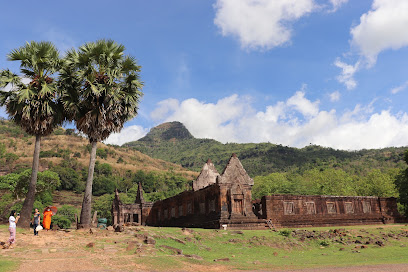
Li Phi Somphamit Waterfalls
Experience the breathtaking beauty of Li Phi Somphamit Waterfalls in Khon Tai, a stunning natural attraction perfect for nature lovers and adventure seekers.
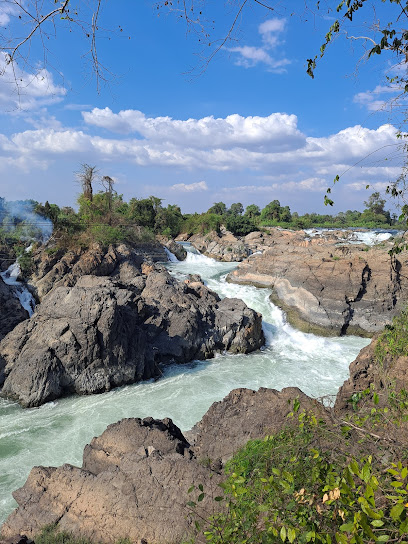
Wat Luang
Experience the tranquility of Wat Luang, a stunning Buddhist temple in Pakse, Laos, where rich culture and serene beauty await every visitor.
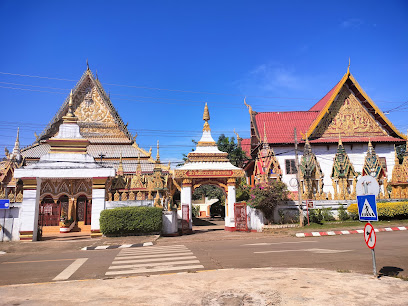
Sae Pong Lai Waterfall
Experience the breathtaking beauty of Sae Pong Lai Waterfall in Hinlat, Laos—a hidden gem perfect for nature lovers and adventure seekers.
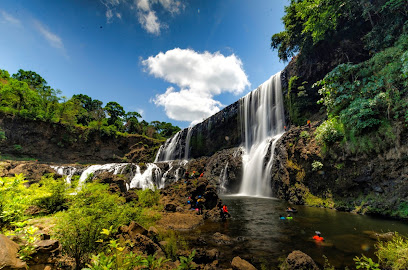
Waterfall on Mekong river
Experience the serene beauty of the Waterfall on the Mekong River, a stunning natural attraction perfect for nature lovers and adventure seekers.
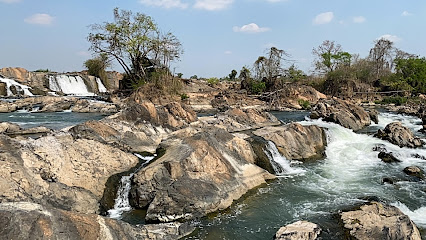
Bolaven Plateau
Experience the breathtaking landscapes, rich culture, and adventure of the Bolaven Plateau, a must-visit destination in Laos for nature lovers.
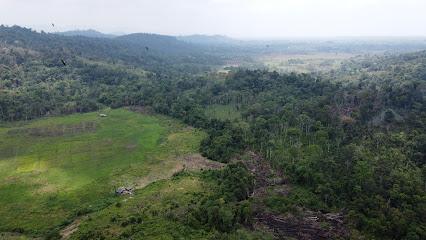
Si Phan Don
Explore the enchanting Si Phan Don, an idyllic archipelago of tranquility, stunning waterfalls, and rich wildlife in the heart of the Mekong River.
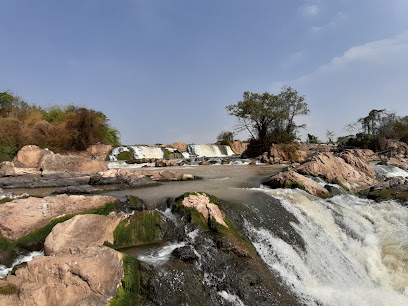
Vat Chompet
Experience the serenity of Vat Chompet, a stunning Buddhist temple in Pakse, Laos, renowned for its intricate architecture and tranquil gardens along the Mekong River.

Wat Muang Kang
Experience the serene beauty and cultural richness of Wat Muang Kang, a must-visit Buddhist temple in the heart of Laos.
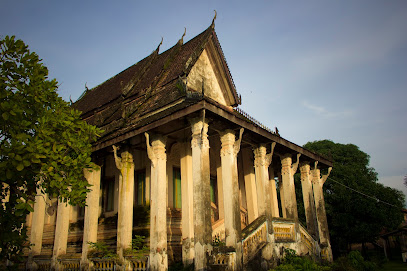
Tad Koy Loy Far Waterfall
Experience the serene beauty of Tad Koy Loy Far Waterfall, a hidden gem in Nam On, perfect for relaxation and adventure in nature's embrace.
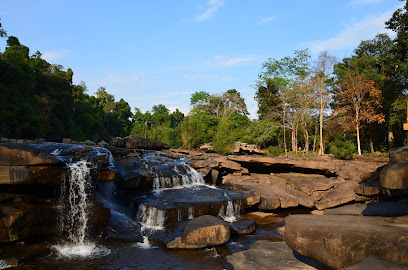
nature beach
Discover the tranquility of Nature Beach in Khon Tai, where golden sands meet azure waters, perfect for relaxation and scenic sunsets.
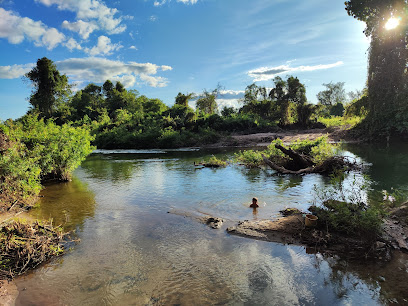
Prasat Hong Nang Sida
Explore the historical enchantment of Prasat Hong Nang Sida, a captivating landmark in Muang Champassak, Laos, steeped in rich cultural heritage.
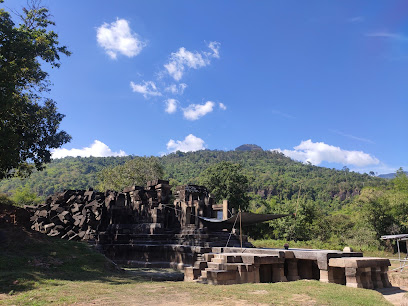
Mystic Mountain Hilltop Viewpoint
Explore the serene beauty of Mystic Mountain Hilltop Viewpoint in Paksong, offering breathtaking views and a tranquil escape into nature.
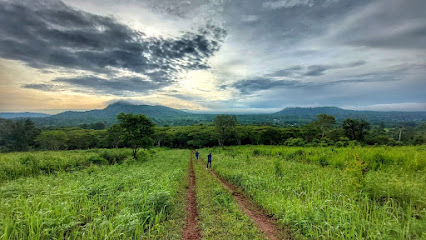
Essential places to dine
Dok Mai Lao Caffe' Restaurant
Experience the taste of Italy at Dok Mai Lao Caffe', where authentic cuisine meets warm hospitality in Pakse.
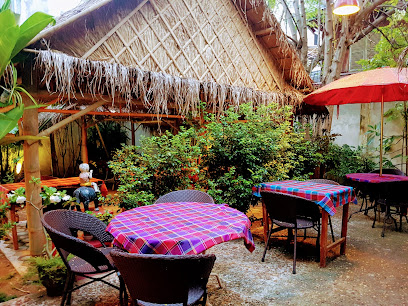
La Silapa Italian & Lao Kitchen
Experience the perfect blend of Italian and Laotian cuisine at La Silapa Italian & Lao Kitchen in Luang Prabang.
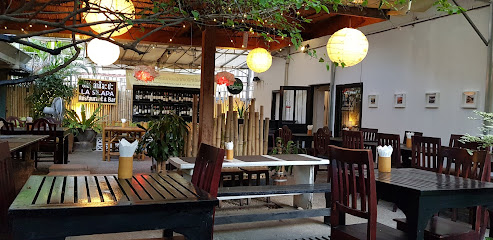
Sabaidee Pakse Restaurant
Experience authentic Lao flavors at Sabaidee Pakse Restaurant in the heart of Pakse - where every meal tells a story.
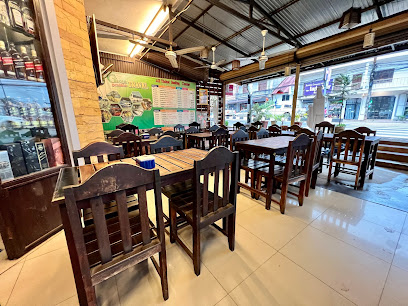
Mama Tanon Guest House & Restaurant
Discover authentic Laotian cuisine amidst stunning natural beauty at Mama Tanon Guest House & Restaurant in Don Det.
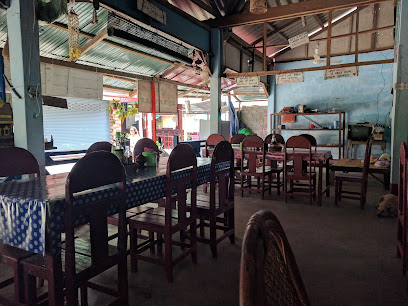
Mama Leuah Guesthouse and Restaurant
Discover authentic Laotian flavors at Mama Leuah Guesthouse and Restaurant in Don Det - your perfect culinary retreat.

The River Resort
Experience luxury and tranquility at The River Resort in Champasak, where nature meets modern comfort along the Mekong River.

La Boulange, French Traditional Bakery
Savor authentic French pastries at La Boulange, Pakse's charming bakery offering delightful treats and an inviting café experience.
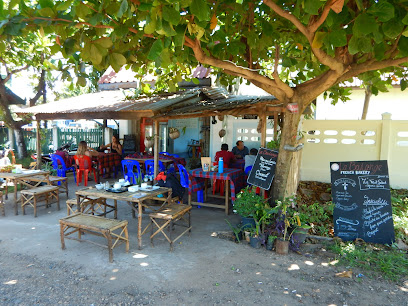
Homemade restaurant
Experience authentic Laotian flavors at Homemade Restaurant in Muang – where every meal is made with love and tradition.
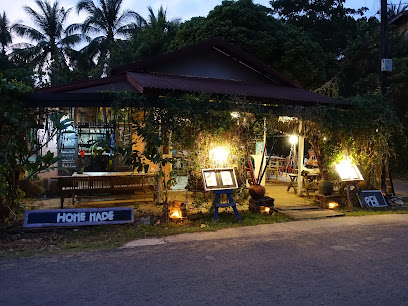
Datta Bananaleaf Restaurant
Experience the vibrant taste of India at Datta Bananaleaf Restaurant in Nakasong - a haven for food lovers seeking authentic flavors.
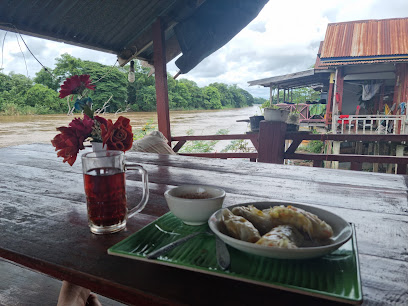
Champasak With Love
Discover authentic Lao cuisine at Champasak With Love along the beautiful Mekong River in Muang Champassak.
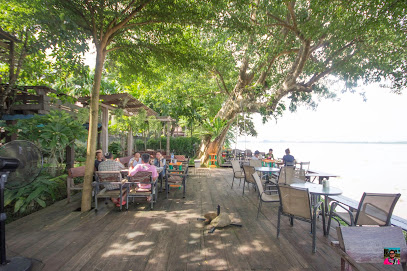
La Folie Lodge
Experience the perfect blend of luxury and authentic Lao cuisine at La Folie Lodge - your serene escape in beautiful Laos.
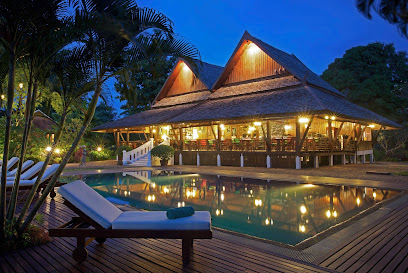
La Mémoire Café & Restaurant
Experience the best fusion cuisine at La Mémoire Café & Restaurant in Pakse – where local flavors meet global inspirations.
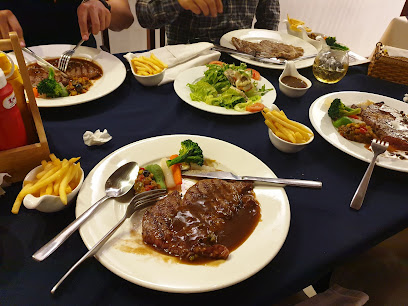
Daolin Restaurant
Experience authentic Laotian flavors at Daolin Restaurant in Pakse - where every meal is a celebration of local cuisine.
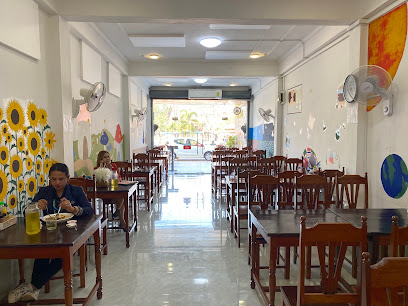
The Riviera Champasak
Discover culinary delights and serene accommodations at The Riviera Champasak - where tradition meets modernity in beautiful Laos.
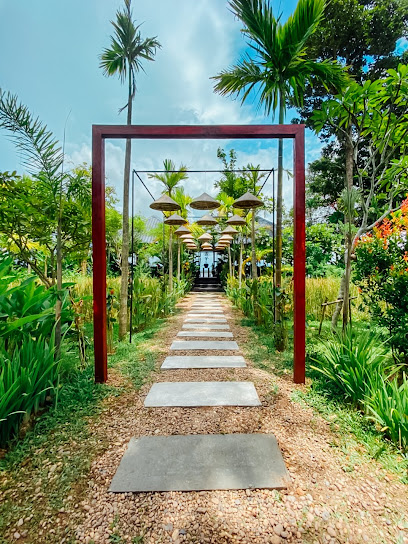
Delta Coffee Shop & Restaurant
Experience authentic Thai cuisine and delightful pastries at Delta Coffee Shop & Restaurant in Pakse - your perfect culinary retreat.
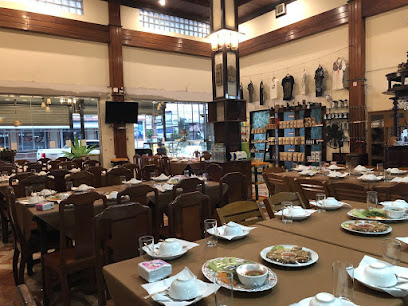
Markets, malls and hidden boutiques
Sabaidee Valley Resort
Discover the tranquility and charm of Sabaidee Valley Resort, your serene escape in the heart of Laos, blending relaxation with local culture.

The River Resort
Experience luxury and tranquility at The River Resort, your perfect retreat along the Mekong River in Champasak, Laos.

Delta Coffee Shop & Restaurant
Savor authentic Thai cuisine, fresh bakery delights, and exquisite coffee in the heart of Pakse at Delta Coffee Shop & Restaurant.
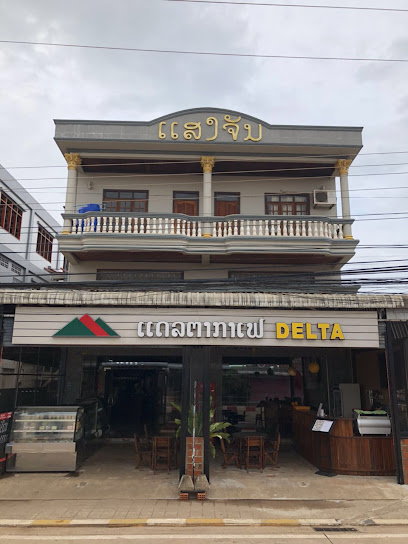
Khamphouy Guest House
Discover comfort and local charm at Khamphouy Guest House in Muang, Laos – your serene retreat for an unforgettable travel experience.

Advice Pakse
Explore the latest in technology and computer products at Advice Pakse, a leading computer store in the heart of Laos.
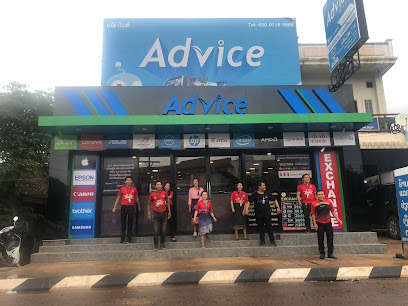
Chez Maman
Explore the charm of local craftsmanship at Chez Maman, a must-visit handicraft shop in Muang Champassak, Laos, offering unique handmade treasures.
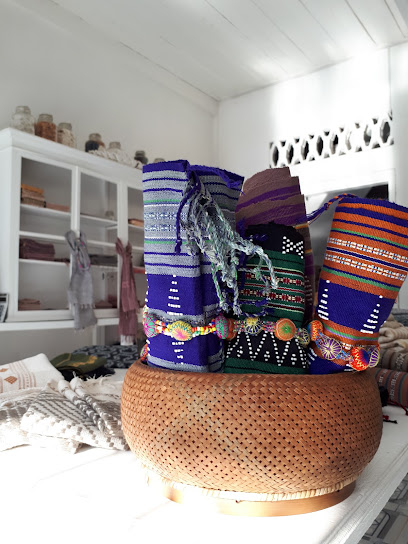
with love Barcheing ດ້ວຍຮັກບາຈຽງ
Explore unique furniture and home decor at with love Barcheing ດ້ວຍຮັກບາຈຽງ, where local craftsmanship meets contemporary design in Houay Lusy.
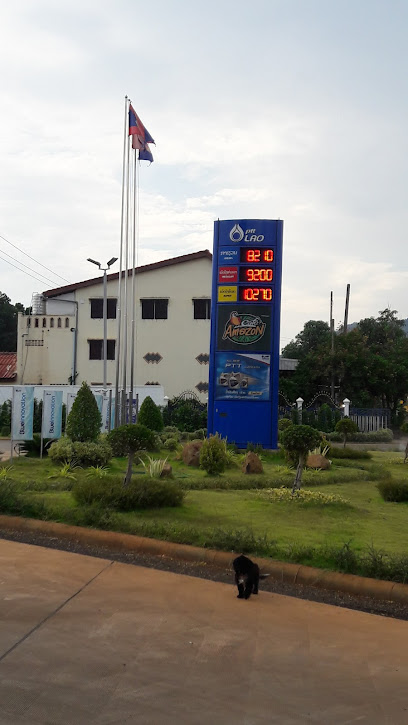
Pathana Boupha Antique House
Explore Pathana Boupha Antique House in Luang Prabang - a unique destination showcasing exquisite antiques and local crafts.
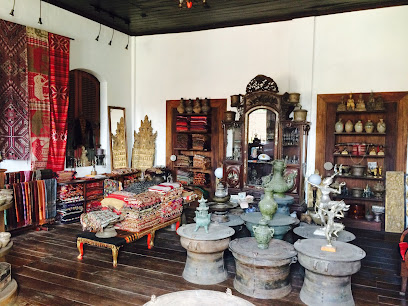
Han Me Diap
Explore the authentic taste of Laos at Han Me Diap, Pakse's premier meat products store, where quality meets tradition.
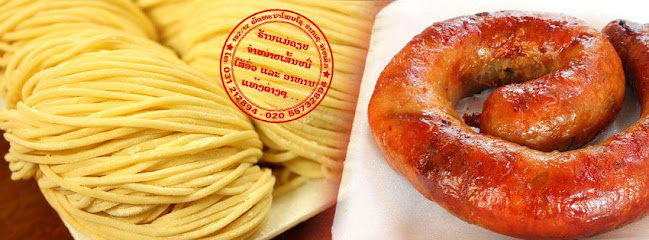
Closet shop
Explore Pathounphone's Closet Shop for a unique blend of local fashion and cultural treasures, perfect for every traveler seeking authentic experiences.
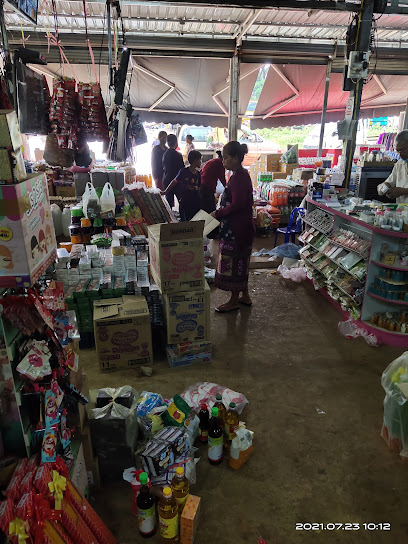
Lak 29 Shop (ຮ້ານແມ່ຫວຽດ)
Explore Lak 29 Shop for an authentic local shopping experience, offering a variety of unique goods and souvenirs in a charming atmosphere.
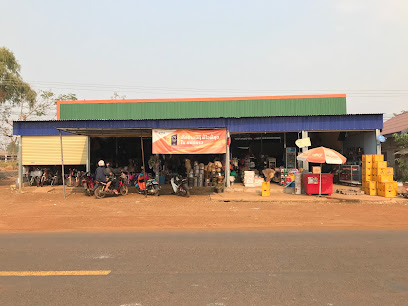
ຈຸດບໍລິການລ້າງອັດສີດ
Explore the vibrant local culture and fresh produce at ຈຸດບໍລິການລ້າງອັດສີດ, a must-visit grocery store in Muang Champassak.
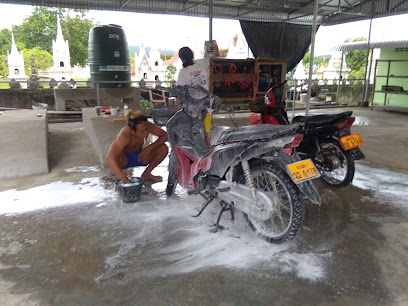
Weaving shop
Explore the beauty of traditional Lao textiles at the Weaving Shop in Muang Champassak, where craftsmanship meets culture.
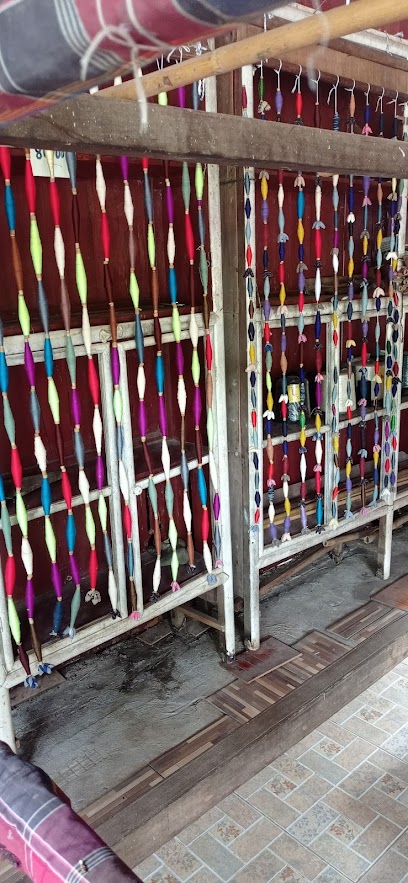
ຮ້ານນາງແປ໋ງ ຂາຍເຄື່ອງທະເລທຸກປະເພດ
Explore the vibrant flavors and local products at ຮ້ານນາງແປ໋ງ in Muang Champassak, a must-visit grocery store for culinary enthusiasts.

ຮ້ານຄໍານາງ ແບະ ແສງວິໄລ
Explore exquisite craftsmanship and unique jewelry at ຮ້ານຄໍານາງ ແບະ ແສງວິໄລ in Pakse, where tradition meets modern elegance.
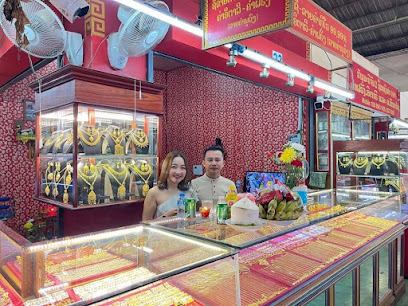
Essential bars & hidden hideouts
The River Resort
Discover tranquility at The River Resort in Champasak, where nature, relaxation, and gourmet dining come together for an unforgettable getaway.

Champasak With Love
Discover the authentic flavors of Laotian cuisine at Champasak With Love, where stunning Mekong River views enhance your dining experience.
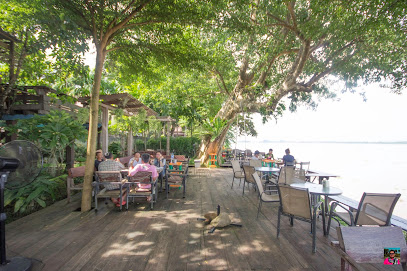
SéSé Wine and Beer
Explore the vibrant flavors of Pakse at SéSé Wine and Beer, where exquisite wines, craft beers, and delightful cuisine await.
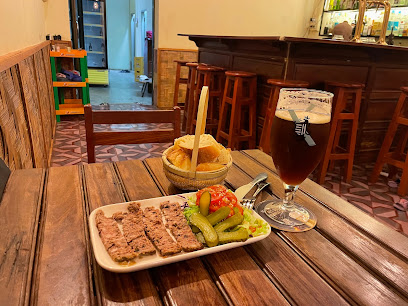
View Bar
Discover the vibrant charm of View Bar in Pakse, where delicious drinks and stunning views create an unforgettable experience for every traveler.
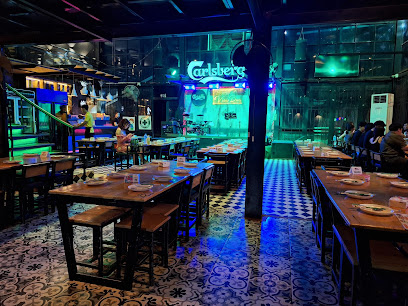
The Riviera Champasak
Discover tropical luxury at The Riviera Champasak, a perfect blend of relaxation, exquisite dining, and breathtaking scenery in the heart of Laos.
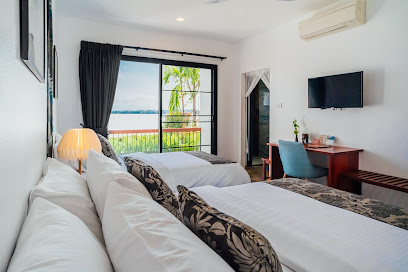
Adams Bar and Restaurant
Discover the vibrant flavors and welcoming atmosphere of Adams Bar and Restaurant in the heart of Nakasong, Laos.
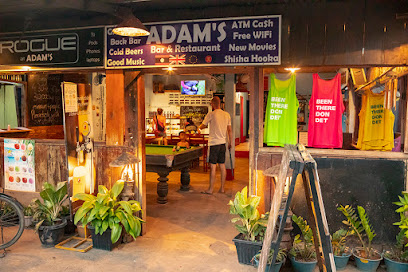
Nakorn Cafe and Restaurant
Discover the authentic taste of Laos at Nakorn Cafe and Restaurant, where traditional recipes come alive in a cozy atmosphere.
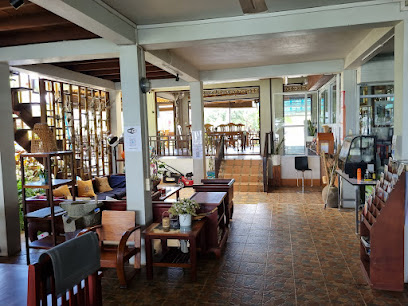
Nakorn River View
Discover the flavors of Laos at Nakorn River View, a charming restaurant and guesthouse by the Mekong River in Champasak.
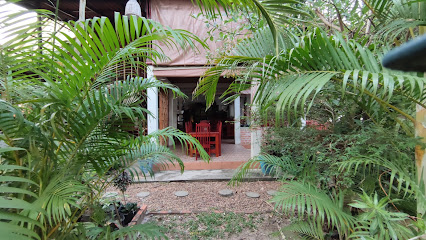
One More Bar and Restaurant
Discover the vibrant atmosphere and delectable dishes at One More Bar and Restaurant in Don Det, Nakasong, your perfect retreat for relaxation.
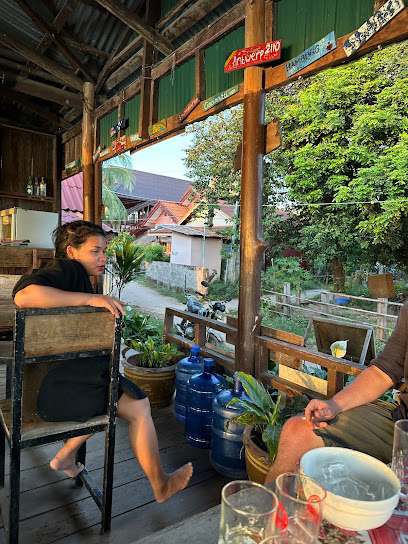
Kea's Backpackers Paradise Restaurant & Bar
Discover Kea's Backpackers Paradise Restaurant & Bar in Don Det for a unique culinary experience amidst stunning natural beauty.
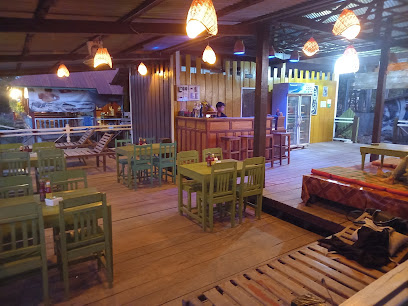
Balance café & beer Pakse
Experience the perfect blend of relaxation and vibrancy at Balance Café & Beer in Pakse, a must-visit for coffee and beer lovers alike.
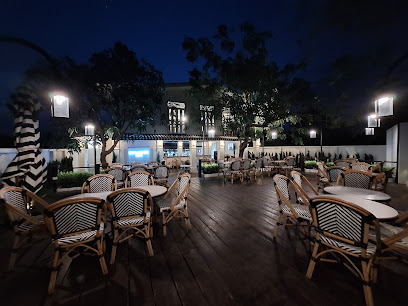
Brick House Sport Bar & Restaurant
Enjoy a lively atmosphere with delicious food and live sports at Brick House Sport Bar & Restaurant in Pakse, Laos.

Soum Noum Restaurant
Experience the exquisite fusion of traditional and modern flavors at Soum Noum Restaurant in Muang Champassak.
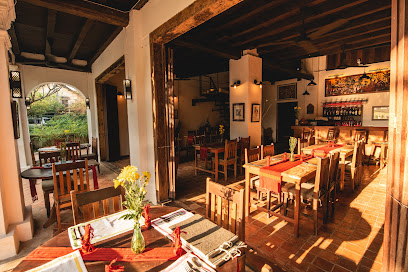
Jarn Xang Café
Experience the local charm and delectable drinks at Jarn Xang Café, a cozy bar in the heart of Muang Champassak.
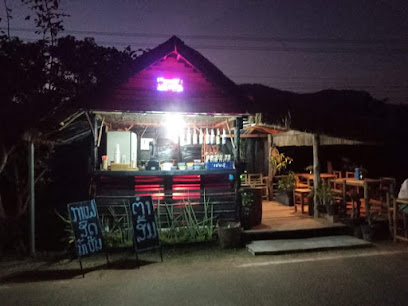
Space X Bar
Experience the energetic nightlife at Space X Bar in Pakse, where locals and tourists gather for great drinks and memorable evenings.
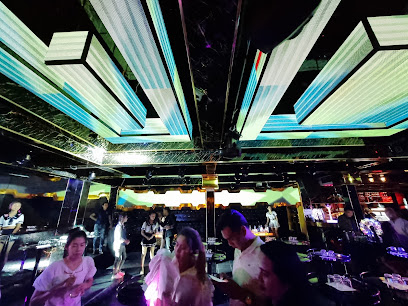
Local Phrases
-
- Helloສະບາຍດີ
[sa bai di] - Goodbyeຜົນງາມ
[pohn gam] - Yesໂດຍ
[doi] - Noບໍ່
[bo] - Please/You're welcomeກະລຸນາ
[ka lai na] - Thank youຂອບໃຈ
[kob chai] - Excuse me/Sorryຂ້າພະເຈົ້າ
[ka pha chao] - How are you?ໂດກາບໍ່?
[do ka bo?] - Fine. And you?ດີ. ແລະ ພວກເຮົາ?
[di. lae bawk hao?] - Do you speak English?ເຈົ້າพูดພາສາອັງກິດແມ່ນບໍ່?
[chao poot pha sa ang kit mai bo?] - I don't understandຂໍອະໄພ
[ko ai pai]
- Helloສະບາຍດີ
-
- I'd like to see the menu, pleaseຂ້າພະເຈົ້າບໍ່ເຈັບບິນ
[ka pha chao bo jap bing] - I don't eat meatຂໍອະໄພບໍ່ກິນຊ້າ
[ko ai pai bo kin sa] - Cheers!ສະບາຍດີ
[sa bai di] - I would like to pay, pleaseຂ້າພະເຈົ້າຕ້ອງຈ່າຍ
[ka pha chao tong jai]
- I'd like to see the menu, pleaseຂ້າພະເຈົ້າບໍ່ເຈັບບິນ
-
- Help!ຊ່ວຍ
[suay] - Go away!ໄຕ
[pai] - Call the Police!ໂທກົມຄົນຕາ
[tho kom khun ta] - Call a doctor!ໂທພະນັກວິສະວະ
[tho pha nak vi sa wa] - I'm lostຂໍອະໄພບັນທືກ
[ko ai pai ban teuk] - I'm illຂໍອະໄພແມ່ນຢ່າງ
[ko ai pai mai yang]
- Help!ຊ່ວຍ
-
- I'd like to buy...ຂ້າພະເຈົ້າປະຖວນ...
[ka pha chao ba thuan] - I'm just lookingຂໍອະໄພກາບອອກ
[ko ai pai ka bok] - How much is it?ມັນແມ່ນເງິນເທື່ອ?
[man mai neun get eo?] - That's too expensiveນີ້ຂອງກິນສາມາດ
[ni khong kin sa mat] - Can you lower the price?ເຈົ້າສາມາດລົງຊ້ວໜາເທື່ອ?
[chao sa mat long swana teo?]
- I'd like to buy...ຂ້າພະເຈົ້າປະຖວນ...
-
- What time is it?ເວລາແລງແລງ?
[welaa leng leng?] - It's one o'clockແຕ່ທ້ວງຊື້ທ່ຽງ
[ta tung su tia] - Half past (10)ຂ່າວຊື້ທ່ຽງ
[kawa su tia] - Morningເຊິາ
[sao] - Afternoonວັນບ່ອນ
[wan bon] - Eveningກາງຕາມ
[kang tam] - Yesterdayວັນວັນກາງ
[wan wan kang] - Todayມື້ນີ້
[meni] - Tomorrowມື້ອື່ນ
[men eun] - 1ໜຶ່ງ
[neung] - 2ສອງ
[song] - 3ສາມ
[sam] - 4ເຖິງ
[see] - 5ຫ້າ
[ha] - 6ເຈັດ
[jet] - 7ແປດ
[pad] - 8ແຈ້ງ
[paet] - 9ເກືອ
[kao] - 10ສິບ
[sip]
- What time is it?ເວລາແລງແລງ?
-
- Where's a/the...?ຢາກຢາກມີ...
[yaak yaak mee...] - What's the address?ຢາກແຕ່ທ້ວງທີ່?
[yaak ta tung ti?] - Can you show me (on the map)?ເຈົ້າສະແດງຂ້າພະເຈົ້າໃນຮູບທີ?
[chao sa dang ka pha chao nai hup ti?] - When's the next (bus)?ມື້ແລ້ວທີ່ລົດຄິນນີ້?
[men leu ti lot kin ni?] - A ticket (to ....)ໜ້າຟິກກິນ (ເຂົ້າທີ....)
[na fig kin (kao ti...)]
- Where's a/the...?ຢາກຢາກມີ...
History of Champasak
-
Champasak's history dates back to at least the 5th century when it was part of the Funan Kingdom, one of the earliest Hindu civilizations in Southeast Asia. It later became a significant part of the Chenla Kingdom, which succeeded Funan. The region's strategic location along the Mekong River made it a vital area for trade and cultural exchange.
-
During the 9th to the 13th centuries, Champasak was under the control of the Khmer Empire, which is evident from the majestic Wat Phou temple complex. Wat Phou, a UNESCO World Heritage site, is a stunning example of Khmer architecture and is believed to have been a place of worship since the 5th century, with most structures built between the 11th and 13th centuries. It served as a major religious center and a pilgrimage site.
-
In the early 18th century, Champasak emerged as one of the three Lao kingdoms, alongside Luang Prabang and Vientiane. The Kingdom of Champasak was founded by King Nokasad in 1713, marking a period of relative autonomy and prosperity. However, the kingdom faced numerous challenges and conflicts, including invasions by neighboring Siam (Thailand) and internal strife. By the late 19th century, the kingdom had declined significantly and was eventually absorbed into French Indochina in 1893.
-
Under French colonial rule, Champasak was integrated into the larger administrative structure of French Indochina. The French influence brought infrastructural developments, including roads and schools, but also significant cultural changes. The colonial period was marked by a mix of economic exploitation and modernization efforts, which had lasting impacts on the region's social and economic fabric.
-
After Laos gained independence from France in 1953, Champasak became part of the newly established Lao state. The region experienced significant turmoil during the Laotian Civil War and the subsequent establishment of the Lao People's Democratic Republic in 1975. In recent decades, Champasak has focused on preserving its rich cultural heritage while promoting tourism as a means of economic development. The Wat Phou Festival, celebrated annually, has become a key cultural event attracting visitors from around the world.
Champasak Essentials
-
Champasak is located in southern Laos along the Mekong River. The nearest airport is Pakse International Airport (PKZ), approximately 30 kilometers away. From Pakse, you can hire a taxi or take a local bus to Champasak, which takes around 40 minutes. Another option is to travel by boat along the Mekong River, offering a scenic and unique approach to the town.
-
Champasak is a small town, and many attractions are within walking or cycling distance. Bicycles are a popular mode of transport and can be rented easily. For longer distances, tuk-tuks and songthaews (shared pickup trucks) are readily available and affordable. If you plan to explore the surrounding region, renting a scooter or motorbike can be a convenient option.
-
The official currency in Laos is the Lao Kip (LAK). While some hotels and larger restaurants may accept credit cards, it is advisable to carry cash, especially in smaller shops and local markets. ATMs are available, but it is a good idea to withdraw sufficient cash in Pakse before heading to Champasak, as ATM availability may be limited.
-
Champasak is generally a safe destination for tourists. However, it is wise to take standard precautions such as avoiding poorly lit areas at night and keeping an eye on your belongings in crowded places. Petty theft, such as pickpocketing, can occur, so stay vigilant. There are no specific high-crime areas targeting tourists, but always be cautious and aware of your surroundings.
-
In case of emergency, dial 1191 for police assistance and 1195 for medical emergencies. The nearest hospital is in Pakse, about 30 kilometers away. It is recommended to have travel insurance that covers medical emergencies. For minor health issues, there are pharmacies in Champasak where you can purchase over-the-counter medications.
-
Fashion: Do dress modestly, especially when visiting religious sites. Avoid wearing revealing clothing. Religion: Do respect local customs and remove your shoes before entering temples. Public Transport: Do be respectful and greet the driver when boarding. Don’t raise your voice or make loud noises. Greetings: Do greet people with a polite 'Sabaidee' and a slight bow of the head. Eating & Drinking: Do try local dishes and accept food offerings graciously. Don’t refuse hospitality, as it is considered impolite.
-
To experience Champasak like a local, visit the morning markets where you can buy fresh produce and traditional Lao goods. Engage with the locals; they are often friendly and willing to share stories about the town's history and culture. Don’t miss visiting the Wat Phu temple complex, a UNESCO World Heritage Site. For a unique experience, take a boat trip on the Mekong River to enjoy the scenic beauty of the region.
Trending Landmark in Champasak
Nearby Cities to Champasak
-
Things To Do in Pakse
-
Things To Do in Ubon Ratchathani
-
Things To Do in Savannakhet
-
Things To Do in Hue
-
Things To Do in Kratie
-
Things To Do in Siem Reap
-
Things To Do in Da Nang
-
Things To Do in Hoi An
-
Things To Do in Tam Ky
-
Things To Do in Thakhek
-
Things To Do in Buon Ma Thuot
-
Things To Do in Battambang
-
Things To Do in Quy Nhon
-
Things To Do in Phnom Penh
-
Things To Do in Nakhon Ratchasima











